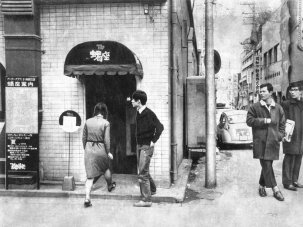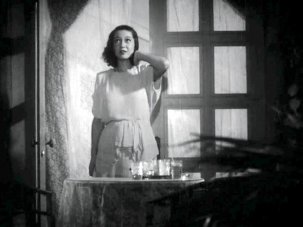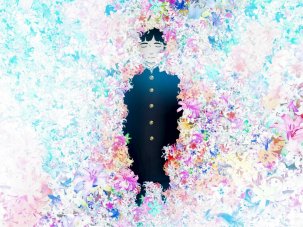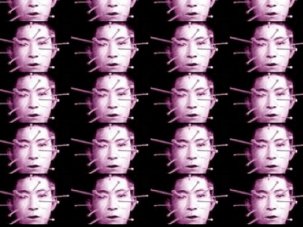Web exclusive
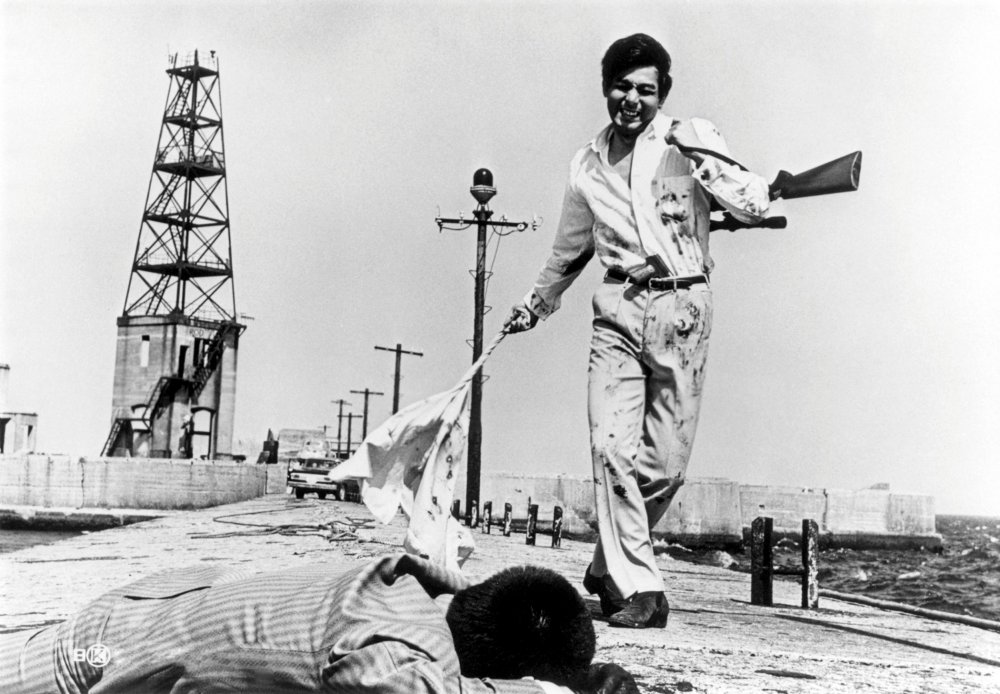
Branded to Kill (Koroshi no rakuin, 1967)
|
Seasons in the Sun: The Heyday of Nikkatsu Studios run 1-30 June at BFI Southbank. |
Over the past year, a host of special events and retrospectives have been held across the globe to mark the centenary of Japan’s oldest film company, Nikkatsu. This June a season of works devoted to the studio’s flourishing output of the 1950s and 1960s arrives at BFI Southbank, giving a broader overview of the idiosyncratic brand of popular entertainment released by the one-time home of such vibrant talents as Suzuki Seijun, Imamura Shôhei, Masuda Toshio and Kurahara Koreyoshi.
In 1954, after a 12-year break in production, this sleeping giant of the pre-war era re-entered the film market refreshed and re-energised. Over the following decades, Nikkatsu’s burgeoning roster of unruly taiyôzoku (‘sun tribe’) youth movies, seductive star-driven dramas, flamboyant musicals and hard-boiled mukokuseki akushun (‘borderless action’) films defined an age, although many of its films and their directors remain all but unknown overseas.
Sleek, sexy, but above all fun, they were infused with all the cosmopolitan chic and carefree optimism of a rapidly modernising Japan – one soon to pass into the hands of a new post-war generation of American-inspired rock ’n’ roll rebels and nouvelle vague sophisticates eager to make a break with tradition. As such, they give us a revealing insight into what was popular among a large section of domestic audiences.
Beyond the auteurs
We like to look at Japanese cinema in terms of its directors. We scour their oeuvres looking for signature styles and recurrent motifs and, always, the temptation is there to look at them within some sort of abstract framework of ‘Japanese-ness’.
But look beyond the Ozus, the Mizoguchis and the Kurosawas and the picture becomes even more perplexing and fascinating. How could it not? In their post-war golden age the Japanese studios were collectively cranking out more than 500 films a year (peaking in 1960 with the domestic release of 547 titles). Meanwhile, the list of the top-grossing titles of the 1950s reveals the names of such unfamiliar directors as Matsuda Sadatsugu, Watanabe Kunio and Inoue Umetsugu. Who were these figures? And what kind of films were they making? The Japanese market in which Nikkatsu re-emerged in the mid-1950s was studio-led, not auteur-led. With more than two-thirds of distribution revenues going to local productions, the industry was dominated by a handful of large companies, which included Shochiku, Toho, Daiei and Toei, and operated under a vertically integrated model of production and distribution, with each vying for their share of the audience.
Crucial to this was the establishment of a recognisable brand. Shochiku, for example, traded largely in the family-friendly genres of romantic weepies, tragedies and home dramas, while Toei courted blue-collar males with swashbuckling jidaigeki historical dramas and, later in the 1960s, its characteristically macho yakuza gangster movies.
Local colour
As in other countries, the decade was defined by technical innovation, notably the scramble for widescreen and colour. Shochiku was the first to release a colour feature, Kinoshita Keisuke’s whimsical musical comedy Carmen Comes Home (Karumen kyokô ni kaeru, 1951) filmed in domestically produced Fujicolor, but with the availability of the more reliable Eastman colour stock other companies, led by Daiei, followed suit.
Flushed with international acclaim at the 1954 Cannes Film Festival for Kinugasa Teinosuke’s sumptuous period drama Gate of Hell (Jigokumon), by 1957 22 of Daiei’s 75 releases were filmed in colour (20 of Toei’s 104 releases were in colour, with 18 of Shochiku’s 62 and 17 of Toho’s 87 – Nikkatsu trailed with eight colour features from a roster of 57 while Shintoho managed just three colour films in their 56 releases. By the end of the decade, more than half of all Japanese films were still shot in monochrome.
In comparison, the wholesale conversion to widescreen formats modelled on Fox’s CinemaScope was much more dramatic. Within a matter of months of the 2 April 1957 opening of Toei’s The Bride of Otori Castle (Otori-jo no hanayome), directed by Matsuda Sadatsugu, all of the majors had released their first titles using their own proprietary widescreen systems. By 1960 only two of 547 domestic productions were in standard Academy ratio, one of them Late Autumn (Akibiyori) directed by Ozu Yasujirô, who famously shunned widescreen.
Multiple choice
All of this was accompanied by a period of rapid expansion in the exhibition sector. In August 1946, one year after the devastation of the Pacific War was brought to an end, there were a mere 1,505 movie houses across Japan. By 1960 this had peaked at 7,457, following an ambitious programme by Shochiku, Toho and Toei of expanding their number of directly owned venues.
With each studio releasing its product into theatres it either managed or was tied into by distribution deals, those such as Toei, with a high number of screens, thrived while those with more limited outlets floundered, such as Shintoho, which went into liquidation in 1961.
The rapidly escalating number of screens created a need for fresh product, which was intensified by Toei’s policy, from January 1954 onwards, of releasing films on double bills that changed every week.
This lead was soon followed by its competitors, resulting in an abundance of titles for domestic audiences. In this context, we can see that the big arthouse hits of the decade like Kurosawa’s Rashomon, Mizoguchi’s Sansho the Bailiff (Sansho Dayu, 1954), thrust forward to foreign film festivals by Daiei, represented only the very tip of the iceberg.
The resurrection of Nikkatsu
It was against this backdrop that the Nikkatsu Corporation released its first productions of the postwar period, with a double bill opening on 27 June 1954 comprising the period drama Chuji Kunisada (Kunisada Chûji), directed by Takizawa Eisuke, and Thus I Dreamed (Kakute yume ari), directed by Chiba Yasuki. From the following year, it released more than 60 titles annually, soon carving out a respectable niche for itself.
Nikkatsu is now largely associated with its torrent of erotic films released en masse from 1971 when the company launched its Roman Porno brand as a reaction to the crisis then hitting the film industry. However, the company had a much more distinguished pedigree.
Japan’s oldest studio had begun life as the Greater Japan Film Machinery Manufacturing Company (Dai-Nihon Firumu Kikai Seizô Kaisha), a trust formed in 1909 by four pioneering smaller outfits, M. Pathé, Yoshizawa, Yokota and Fukuhôdô. The merger was made official in 1912, and the Japan Cinematograph Company (Nippon katsudô shashin kaisha) was formed, referred to thereafter by its abbreviated name of Nikkatsu.
The new company occupied a strong position in its early decades, with an output primarily of chanbara sword-fighting historical dramas, and throughout the 1920s nurtured such esteemed early filmmaking talents as Mizoguchi Kenji, Itô Daisuke, Uchida Tomu and, in the 1930s, Yamanaka Sadao.
However, through a combination of internal strife among management and competition from rivals such as Shochiku and Toho, by the end of the 1930s the company was facing severe difficulties.
In 1942, with the film industry under the control of the wartime government, Nikkatsu’s production arm was hived off and merged with two smaller enterprises, Shinkô and Daito, to form Daiei. For the next 12 years, Nikkatsu was left to function solely in a distribution and exhibition capacity and, following the war, exclusively distributed foreign films while expanding its interests in the entertainment industry to manage sports and leisure venues.
Rising talents
The decision of the company president, Hori Kyûsaku, to re-enter production in 1954 faced considerable opposition from the other studios. Suzuki Seijun and Imamura Shôhei were but two fledgling filmmakers to jump ship from Shochiku when Nikkatsu opened its newly constructed studio complex in Chôfu, in the suburbs of Tokyo.
The pair would go on to direct some of the best-known titles for a company which, at the time, was not particularly concerned with international prestige. Imamura had started off as an assistant director to Ozu at his older workplace, but found the rambunctious approach of his new mentor, Kawashima Yûzô, who had been lured from the same company by Nikkatsu’s more appealing work environment, far more in line with his own tastes.
Until recently Kawashima could lay claim to being one of Japanese cinema’s best kept secrets, his name virtually unknown in the West until Eureka’s recent Blu-ray release of what is seen as his masterpiece, The Sun Legend of the End of the Tokugawa Era (Bakumatsu taiyô-den, 1957), ranked fifth in the influential Kinema Junpo magazine’s pick of the greatest Japanese pictures ever made.

Suzaki Paradise: Red Signal (Suzaki paradaisu: Akashingô, 1956)
Kawashima was born in 1918; he was only eight years older than Imamura but had already directed a number of minor programme pictures when at Shochiku. The two men immediately hit it off and, in such films as Kawashima’s first for Nikkatsu, Burden of Love (Ai no onimotsu, 1955), a social satire about birth control revolving around the minister for public health and the various women in his life, it is easy to detect the same traits with which Imamura himself would later be associated – a love of bawdy subject matter and irreverent humour, strong female characters and an ostensibly messy approach to mise-en-scène that masked a deceptive intelligence.
Kawashima could also pack a powerful emotional punch. In Suzaki Paradise: Red Signal (Suzaki paradaisu: Akashingô, 1956), released during a short-lived boom in so-called akasen (‘red light’) films to mark that year’s passing of the Anti-Prostitution Law (including Mizoguchi’s final work Street of Shame), a young couple in search of employment pitch up at a riverside drinking den in a rundown Tokyo suburb. A seductive neon sign announcing the ‘Suzaki Paradise’ of the red-light district on the other side of the river points to an ready source of income for a woman with such obvious assets as the wife, Tsutae. As tensions in their relationship grow, so does the temptation of crossing the bridge to the unknown fate on the other side.
Sex sells
The year marked something of a watershed moment in Japanese cinema’s frankness towards sexuality following the introduction of a new seijin adult category by the censorship board Eirin in 1954. Nikkatsu was among the first to capitalise on it.
One film to cause a considerable stir on its release was Furukawa Takumi’s Season of the Sun (Taiyô no kisetsu, 1956). Its story of an impassioned affair between Tatsuya, a surly member of the college boxing team and Eiko, a sophisticated rich girl he meets while cruising with his friends in Tokyo’s fashionable Ginza district was doused in the same teen spirit that had made Rebel without a Cause (1955) such a hit in Japan.
Unfolding over a long hot summer of beach parties and yacht races, it signalled a generational divide between the wave of baby boomers who’d come of age in the wake of the war and an older generation who raised concerns about the film’s portrayal of youth delinquency and premarital sex.
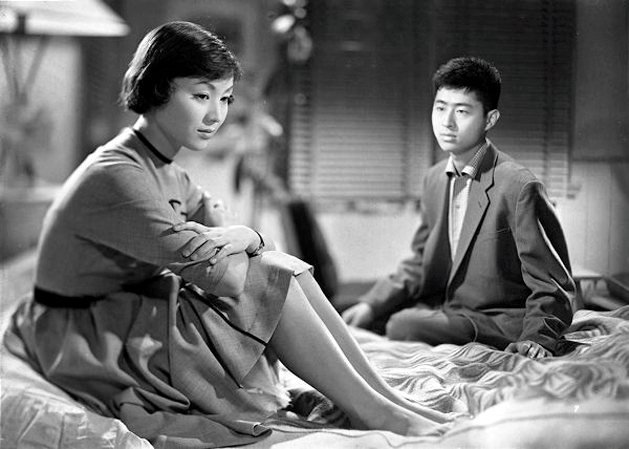
Season of the Sun (Taiyô no kisetsu, 1956)
The film’s success can be largely attributed to the honesty and freshness of its source material, a novel of the same name by the young author Ishihara Shintarô, born in 1932. Its depiction of insouciant sun-worshippers from affluent backgrounds who couldn’t give two hoots about tradition and social mores seemed very much drawn from Ishihara’s firsthand experiences. The film’s success launched a new wave of similar works referred to as taiyôzoku, or ‘sun tribe’ films.
While other studios also got in on the taiyôzoku boom – notably Daiei with Punishment Room (Shokei no heya), another Ishihara adaptation directed by Ichikawa Kon in 1956; and Masumura Yasuzô’s Kisses (Kuchizuke) in 1957 – the success of Season of the Sun defined a new target demographic for Nikkatsu.
It also provided the studio with one of its greatest assets in the form of Ishihara’s younger brother, Yujirô, whose brief but distinctive appearance in a supporting role as part of Tatsuya’s entourage saw him singled out to play the lead in Nakahira Kô’s Crazed Fruit (Kurutta kajitsu, 1956).
Adapted by the older Ishihara from his own novel and released within two months of its predecessor, its portrayal of sibling rivalry between two brothers vying for the attention of a flirtatious older woman married to an American sugar daddy against a backdrop of sun, sea and speed-boats made it a quintessential work in the genre.
Penning several further vehicles for his younger brother, including such noir-inspired crime dramas as I Am Waiting (Ore wa matteru ze, 1957), directed by Kurahara Koreyoshi, and Rusty Knife (Sabita naifu, 1958), directed by Masuda Toshio, Ishihara Shintarô’s tenure at Nikkatsu lasted until the end of the decade.

The Woman from the Sea (Kaitei kara kita onna, 1959)
His last for the company, Kurahara’s The Woman from the Sea (Kaitei kara kita onna, 1959), was perhaps his strangest. Its mesmerising tale of a yacht-loving youth seduced by a mysterious woman he finds adrift at sea unfolds in the same coastal milieu as the ‘sun tribe’ films, but adds a supernatural element to proceedings, not to mention a more overtly erotic air due to its casting of the glamorous Tsukuba Hisako, already a box-office lure through her willingness to bare her shapely form in a number of similar titles for Nikkatsu.
Though he continued to write scripts sporadically for a number of other companies throughout the 1960s – including Shinoda Mashiro’s Punishment Island (Shokei no shima) released by Daiei in 1966 – and many further titles were produced from his literary works, Ishihara senior’s involvement in film increasingly fell by the wayside as his political ambitions rose. Now, somewhat ironically given the rather anarchic nature of his early work, he is best-known as the governor of Tokyo, a post he held from 1999 to 2012.
The meteoric rise of Yujirô Ishihara
In the meantime, the rise of his younger sibling Yujirô was nothing short of meteoric. Rapidly establishing a successful singing career alongside top-billed appearances in such titles as Masuda’s Red Quay (Akai hatoba, 1958) and Tree of Youth (Seinen no ki, 1960), and Kurahara’s 1962 Ginza Love Story (Ginza no koi no monogatari), his presence alone was enough to guarantee the box-office success of the films.
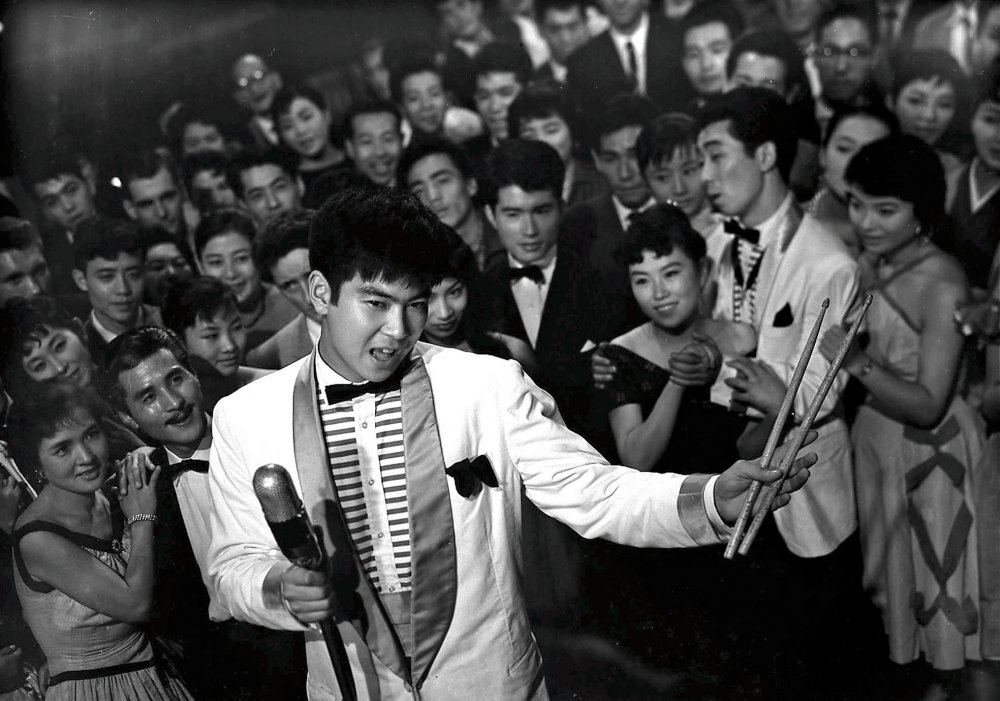
The Man Who Raised a Storm (Arashi o yobu otoko, 1957)
Early roles as the heroic hijacked airline pilot with a heart of gold in Nakahara Kô’s Crimson Wings (Kurenai no tsubasa, 1958), and the jazz-drummer who gets embroiled with the mob in Inoue Umetsugu’s The Man Who Raised a Storm (Arashi o yobu otoko, 1957), saw the films positioned as the fifth and 11th top money-spinners of the decade, respectively.
His departure in 1963 to make films independently through his own company Ishihara Promotion, with his first such production, Ichikawa Kon’s Alone Across the Pacific (Taiheiyô hitori-botchi), was a huge blow to Nikkatsu, although the studio continued to distribute many of them throughout the 1960s.
Idols and starlets
Nikkatsu struggled to find another star of such ascendancy as Yujirô, although it did have others at its disposal, such as those comprising its ‘Diamond Line’ roster of matinée idols and action heroes, which included Kobayashi Akira, Akagi Keiichirô, Nitani Hideaki, Takahashi Hideki, Watari Tetsuya and Shishido Jô, as well as starlets such as Asaoka Ruriko, Minamida Yoko, Shiraki Mari and Matsubara Chieko.
Even before Yujirô’s departure, Nikkatsu had enlisted the services of popular singer Sakamoto Kyû to appear in the lead role of the Masuda-directed youth musical I Look Up When I Walk (Ue o muite arukou, 1962), performing his ear-infecting karaoke classic of the same name (which has the distinction of being the only Japanese pop song ever to hit the number-one spot in the US charts).

I Look Up When I Walk (Ue o muite arukou, 1962)
This ‘film based on a song’ not only demonstrates the studio’s eagerness to capitalise on other aspects of Japanese pop culture. The song’s English release title of Sukiyaki, referring to a hearty Japanese hotpot served at parties and other special occasions, could just as well refer to the exuberant ‘anything goes’ philosophy the studio employed in its own emerging brand of what became termed mukokuseki akushun, or ‘borderless action’ movies.
Hip and worldly-wise, the mukokuseki cross-genre mash-ups often drew on American and European sources for their fashions, settings and scenarios. This resulted in some truly curious titles as Plains Wanderer (Daisogen no wataridori, 1960), part of the nine-film Wataridori (or ‘wandering guitar’) series, which featured chisel-jawed tough guy Kobayashi as a guitar-strumming crooner with a black-tasselled leather jacket and a red neckerchief, who wanders from town to town across Hokkaido righting wrongs and leaving a trail of broken hearts behind him.
Though self-consciously modelled on the American western, the film characteristically tackled local concerns, namely the discrimination faced by the indigenous Ainu inhabitants of Hokkaido against ruthless property developers from the big city.
Into the melting pot
Indeed, while it is easy to dismiss many of Nikkatsu’s films from the period as superficial genre pieces unfolding in a gaudy, glittering cinematic Never-Neverland beyond the reach of their viewers’ everyday experience, race, culture and the schism between Japan and the outside world played a far more important role in Nikkatsu’s productions than those of the other studios.
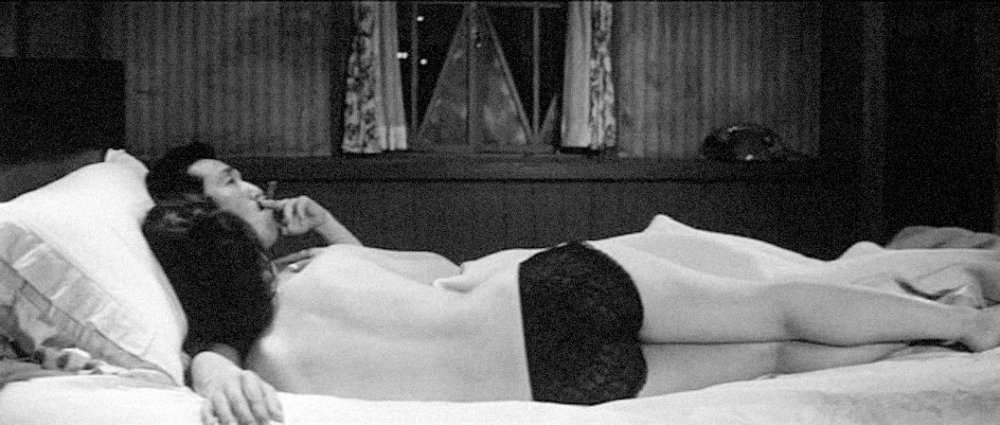
Monday Girl (Getsuyobi no Yuka, 1964)
Many of its dramas unfolded in port cities, airports and similar international interzones. Masuda’s sleek gangster thriller Velvet Hustler (Kurenai no nagareboshi, 1967) sees Watari Tetsuya hopping into his red convertible and hotfooting it out of Tokyo westwards to Kobe after rubbing out a rival gang boss. Here he hangs out in smoky lounge bars by the downtown port area while keeping unruly US marines on leave from Vietnam in check before his fate catches up with him in the form of hit man Shishido Jô.
In Nakahira’s Godard-esque Monday Girl (Getsuyobi no Yuka, 1964), the ethnic melting pot of Yokohama is used to represent the frontline of a post-war Japan marked by a renewed reliance on trade and cultural interaction with the outside world yet still bound by old patriarchal traditions. Within it, Mariko Kaga’s dreamy Holly Golightly-styled goodtime girl Yuka sees herself as no more free than the Jamaican girl who lives next door in the same rundown district, despite the fancy clothes and exotic lifestyle bestowed upon her by her wealthy Japanese patron.
Occupied territory
The nearby town of Yokosuka during the occupation takes on even more politicised dimensions in Imamura’s Pigs and Battleships (Buta to gunkan, 1961), which features a low-rent wannabe mobster conniving in an illicit pork meat racket as a means of eking out an existence within the shanty town that has emerged around the US naval base.
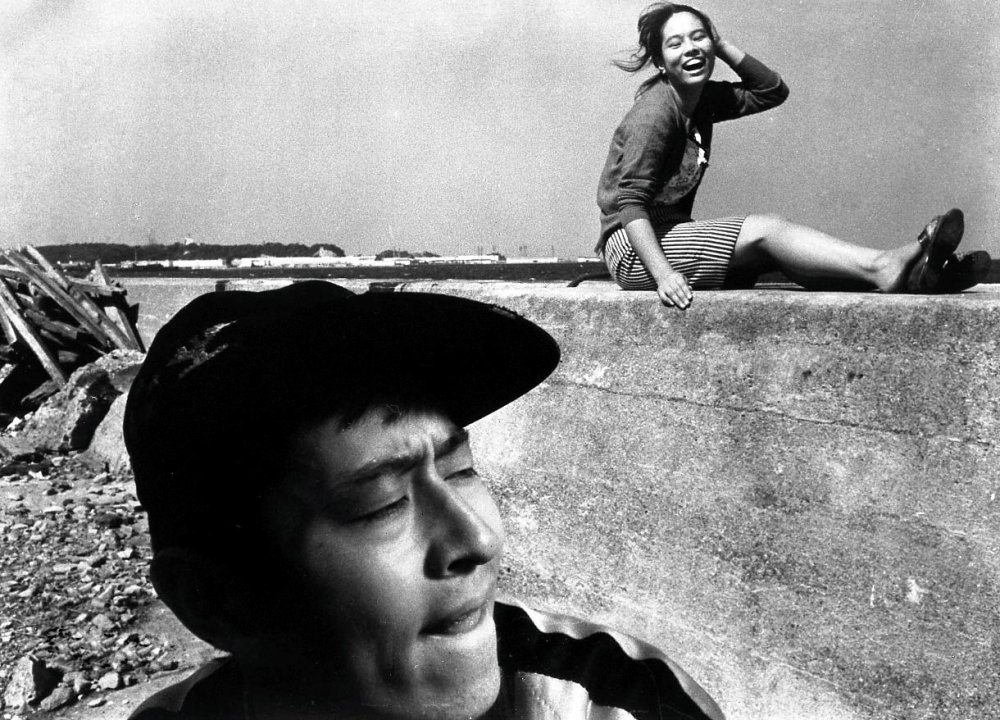
Pigs and Battleships (Buta to gunkan, 1961)
Despite its rather less glamorous take on the criminal underworld, Imamura’s fifth work is not easily divorced from the type of genre films that Nikkatsu were seen as specialising in during the 1960s. It can be seen as a logical stepping stone between the director’s more conventional studio features and his increasingly ambitious projects such as Insect Woman (Nippon konchûki, 1963) and Intentions of Murder (Akai satsui, 1964), before he left the company to produce his films independently.
The tensions within the communities existing in the shadow of the American military presence is also a feature in Hasebe Yasuharu’s Stray Cat Rock: Sex Hunter (Noraneko rokku: Sekkusu hanta, 1970), part of a five-episode series about delinquent girl gangs led by the slinky Kaji Meiko. This third entry brings the issue of ethnicity to the foreground, as Kaji leaps to the defence of the mixed-race offspring of Yokosuka’s African-American servicemen, who are being targeted by an all-male gang with a disturbingly nationalistic bent.
Mixed-race characters were an unspoken presence in many of Nikkatsu’s films, with performers such as the half-British crooner Jerry Fujio – who plays alongside Shishido Jô as one of two hit men hiding out in Yokohama in Nomura Takashi’s hard-boiled actioner A Colt Is My Passport (Koruto wa ore no pasupoto, 1967) – and the half-Indian Mari Annu, the mysterious but deadly femme fatale at the heart of Suzuki’s Branded to Kill (Koroshi no rakuin, 1967, pictured at top), contributing to the films’ otherworldly air of exoticism.
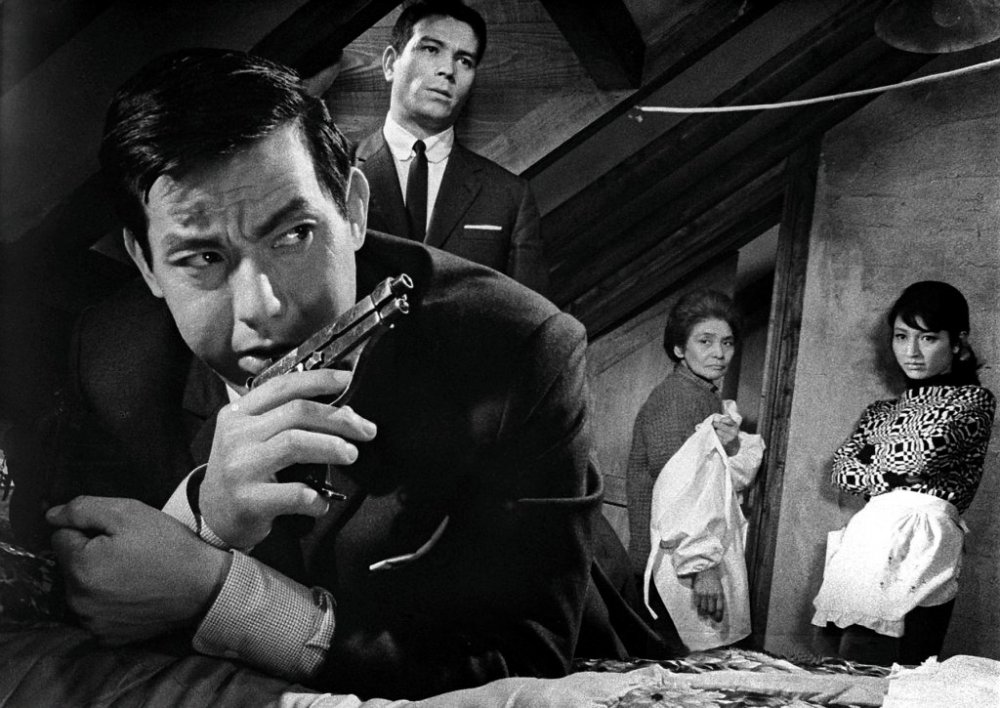
A Colt Is My Passport (Koruto wa ore no pasupoto, 1967)
These two superficially similar works, released within months of one another, are master classes in the mutability of genre, their plots unfolding with a dreamlike transcendental ambience within a Jungian labyrinth of industrial wastelands, anonymous tower blocks, landfill sites and other liminal spaces to create a unique and disorienting mood, the familiar rendered alien in a way that can be truly described as mukokuseki. As Suzuki himself so often claimed, “In my films, time and place are nonsense.”
Alas Branded to Kill, now seen as the apogee of Suzuki’s increasingly stylised abstraction and off-kilter approach to dramatic set pieces, proved a step to far for Nikkatsu President Hori, who dismissed the film as “nonsense”. The director was summarily dismissed from the company, a scapegoat for the increasingly precarious financial situation it was facing by the end of the 1960s.
Nikkatsu was not alone in this respect. Within a few years Daiei had gone under, while Shochiku, Toei and Toho had begun increasingly focusing on the exhibition side of their business.
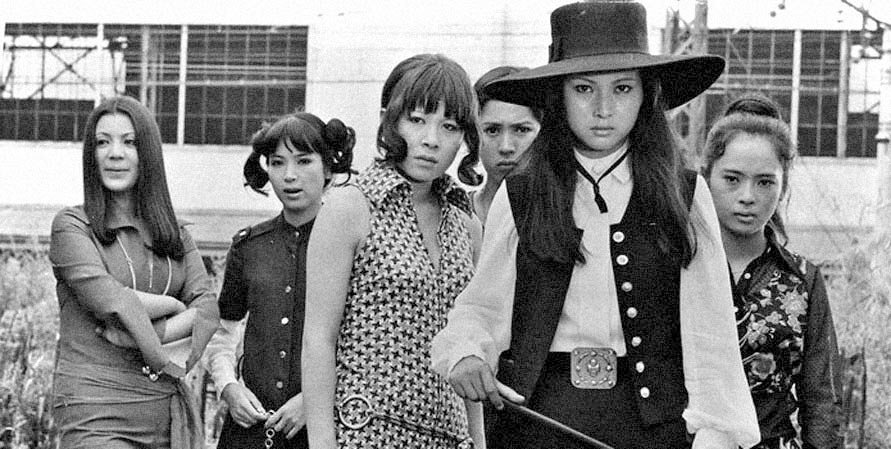
Stray Cat Rock: Sex Hunter (Noraneko rokku: Sekkusu hanta, 1970)
Overproduction, the loss of audiences to television and the explosion of low-budget independent eroduction (or ‘pink’ films) saw the industry thrown into crisis, and it was with more violent, edgier and sexier films such as Stray Cat Rock: Sex Hunter and Hasebe’s earlier Retaliation (Shima wa moratta, 1968) that Nikkatsu saw its future lying.
In 1971, Hori made the decision to wholeheartedly throw in his lot with the adult market, and the new erotic Roman Porno line was born. Many of its in-house directors and contracted stars left the company, often for television. The face of Japanese cinema changed forever, although uniquely Nikkatsu was the only company to continue the same production-line levels of output, albeit on dramatically reduced budgets. With one golden age over, another was just about to begin.




